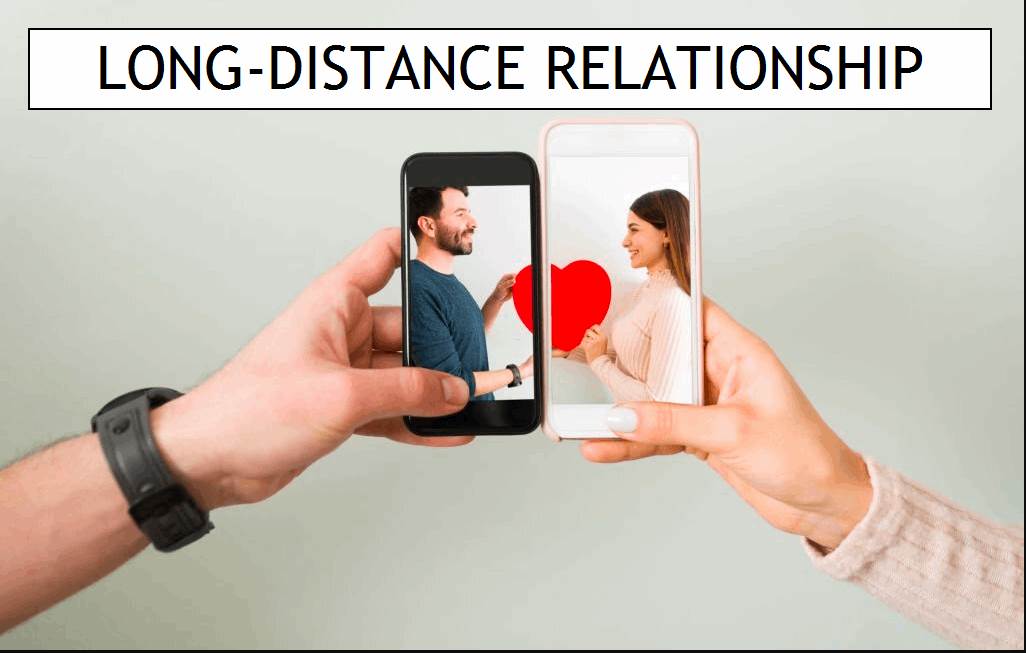Welcome to the fascinating world of polyamory! In a society that often emphasizes monogamy as the only acceptable form of a romantic relationship, it’s time to explore an alternative approach that challenges traditional norms. Polyamorous relationships, also known as “poly” for short, are becoming more recognized and understood in recent years.
If you’ve ever wondered what it means to be polyamorous or if this lifestyle might be right for you, then you’re in the right place. This blog post will delve into everything you need to know about polyamory – from its history and different types of relationships to the benefits and challenges that come with it. So grab a cup of tea (or your beverage of choice), sit back, and let’s embark on this enlightening journey together!
What Is Polyamory?
Polyamory is a relationship structure in which individuals have multiple romantic or sexual partners simultaneously, with the knowledge and consent of all parties involved. It’s important to note that polyamory is not the same as cheating or infidelity. In polyamorous relationships, honesty, communication, and consent are at the core.
Unlike monogamy, where individuals commit to one partner exclusively, polyamory embraces the idea that it’s possible to love and form meaningful connections with more than one person at a time. This can take various forms depending on individual preferences and agreements within each relationship.
One key aspect of polyamory is open communication. Partners must be willing to engage in honest conversations about their desires, boundaries, and expectations. Trust plays a vital role in maintaining healthy polyamorous relationships.
Another distinguishing feature of polyamory is compersion – experiencing joy when your partner finds happiness with someone else. Instead of feeling threatened by their connection with others, you celebrate their fulfillment.
While physical intimacy may be part of some poly relationships, emotional bonds are equally significant. Polyamorous individuals often prioritize building deep emotional connections with multiple partners rather than focusing solely on physical intimacy.
Understanding what it means to be in a polyamorous relationship requires an open mind and willingness to challenge societal norms surrounding monogamy. It’s about embracing love without limits and exploring unconventional paths toward fulfilling relationships based on trust, communication, and mutual respect.
The History Of Polyamory
The history of polyamory is a fascinating journey through time, filled with diverse cultures and relationships. While many might assume that polyamory is a modern concept, it actually has roots in ancient civilizations.
In various historical societies, polyamorous relationships were accepted and even celebrated. For example, in ancient China during the Han Dynasty, wealthy men often had multiple wives who lived together harmoniously. In West Africa, the practice of having multiple spouses was common among certain tribes.
Throughout history, there have been notable figures who embraced non-monogamy. The famous philosopher Friedrich Nietzsche advocated for free love and believed in dismantling societal norms around monogamy. The Bloomsbury Group in early 20th century England also challenged traditional relationship structures.
It wasn’t until the late 20th century that the term “polyamory” emerged as a way to describe consensual non-monogamous relationships. Today, more people are embracing this lifestyle choice as they challenge societal expectations and seek fulfilling connections on their own terms.
Understanding the history of polyamory helps us appreciate its longstanding presence across different cultures throughout time. It reminds us that human beings have always sought diverse ways to form meaningful connections with others beyond traditional monogamy.
Different Types Of Polyamorous Relationships

Polyamorous relationships come in various forms, each tailored to meet the unique needs and preferences of the individuals involved. These different types allow for flexibility and customization within the framework of ethical non-monogamy.
Triad Or Closed Triad Polyamorous Relationship
One type of polyamorous relationship is known as a triad or closed triad. In this arrangement, three individuals are involved romantically with one another. They form a committed unit where all members are equally connected to each other.
V-Type Relationships
Another common type is called a V-type relationship. This structure involves one person at the center, often referred to as the “hinge,” who has multiple partners but those partners may not have a romantic connection with each other. The hinge partner acts as a bridge between two separate relationships.
Hierarchical Polyamorous Relationships
There are also hierarchical polyamorous relationships where there is an established primary partnership that takes precedence over any additional connections. This can involve having rules and boundaries set by the primary couple regarding their involvement with others.
Solo Polyamory Relationships
Solo polyamory is another type that emphasizes individual autonomy and independence within multiple relationships. Solo poly individuals prioritize personal growth and freedom while maintaining intimate connections with others.
Kitchen Table Polyamory Relationship
Kitchen table polyamory refers to an approach where everyone involved in the polycule (a term used to describe interconnected polyamorous relationships) strives for open communication and harmony. They aim for sitting around a metaphorical kitchen table, resolving any issues openly together.
These are just some examples of the diverse range of polyamorous relationship structures available today. It’s important to remember that these categories aren’t fixed or exhaustive; they merely serve as starting points for understanding how people navigate multiple romantic connections simultaneously without compromising honesty, consent, and empathy.
The Benefits Of Polyamorous Relationships
Emotional Support and Connection
In a polyamorous relationship, individuals have the opportunity to form deep emotional connections with multiple partners. This can provide a sense of support, validation, and companionship that may not be possible in a monogamous relationship where all emotional needs are expected to be met by one person.
Increased Variety and Exploration
Polyamory allows for greater variety and exploration in intimate relationships. Each partner brings their own unique qualities, interests, and experiences to the table, creating opportunities for personal growth and self-discovery.
Enhanced Communication Skills
Polyamorous relationships often require open and honest communication about desires, boundaries, jealousy, and other complex emotions. Engaging in these conversations can help develop excellent communication skills that benefit all aspects of life.
Shared Responsibilities
With multiple partners involved in a polyamorous relationship, there is an opportunity to share responsibilities such as household chores or financial obligations more evenly among all parties involved.
Expanded Network of Supportive Relationships
In polyamory, it’s common for partners’ networks to overlap or intertwine with each other. This creates a web of supportive relationships where everyone has access to additional sources of love, care,
and friendship within the larger molecule.
It’s important to note that while there are numerous benefits associated with polyamory like those mentioned above (and many more), it does come with its own challenges as well – which we will explore further in the next section.
The Challenges Of Polyamory
Polyamorous relationships come with their fair share of challenges. One of the main obstacles is managing jealousy and insecurities. In a polyamorous dynamic, it’s natural for feelings of jealousy to arise when one partner forms a connection with someone new. It requires open communication, trust, and self-reflection to navigate these emotions.
Another challenge is time management. With multiple partners, scheduling can become quite complex. Balancing everyone’s needs and ensuring that each relationship receives adequate time and attention can be demanding.
Polyamory also requires dealing with societal norms and judgments. Society often stigmatizes non-monogamous relationships, leading to misunderstandings or even discrimination from friends, family, or coworkers.
Effective communication is vital but can be challenging in polyamory as well. Openly expressing desires, boundaries, and concerns while being sensitive to others’ feelings takes practice and patience.
Alongside this comes the need for strong emotional intelligence in order to effectively handle conflicts that may arise within the various relationships involved.
Navigating legal issues such as custody rights or financial complications can pose additional challenges for those in polyamorous relationships.
While these challenges are not insurmountable by any means – they require effort from all parties involved – they do highlight the importance of clear communication, self-awareness,
and mutual understanding within polyamorous dynamics.
How To Know If Polyamory Is Right For You
Exploring and understanding your own desires, needs, and boundaries is crucial when considering if polyamory is right for you. Here are some important factors to consider:
Honesty With Yourself: Reflect on your feelings towards monogamy and whether you have the capacity to love or be emotionally involved with multiple people simultaneously.
Communication Skills: Polyamorous relationships require open and honest communication about emotions, expectations, and boundaries. Assess your ability to communicate effectively in such situations.
Jealousy Management: Jealousy can arise in any relationship but tends to be more complex in polyamorous dynamics. Evaluate how you handle jealousy and whether you’re willing to work through it constructively.
Time Commitment: Consider if you have the time and energy necessary to invest in multiple relationships while maintaining a healthy balance between them all.
Support Network: Having a supportive community of friends or partners who understand polyamory can provide valuable guidance throughout your journey.
Remember that there isn’t a one-size-fits-all answer for everyone; what works for one person may not work for another. It’s essential to listen to your intuition, explore resources, seek advice from experienced individuals within the poly community, and allow yourself space for personal growth as you navigate this unique relationship style.
FAQs
Can You Have A Committed Polyamorous Relationship?
How Do You Handle Jealousy In A Polyamorous Relationship?
Is Being In A Polyamorous Relationship Considered Cheating?
How Does Having Children Work In A Polyamorous Family Dynamic?
Can Someone Be Happy In A Long-term Polyamorous Relationship?
With proper care and attention given to nurturing these aspects within their relationships, poly individuals are fully capable of experiencing fulfilling long-term partnerships.
Remember that every person’s experience with polyamory will be unique – what works for one couple or group may not work for another.
As society evolves so too do our ideas around love, relationships, and personal autonomy; polyamorous relationships are just one example of how people are exploring new possibilities and redefining traditional relationship structures.





